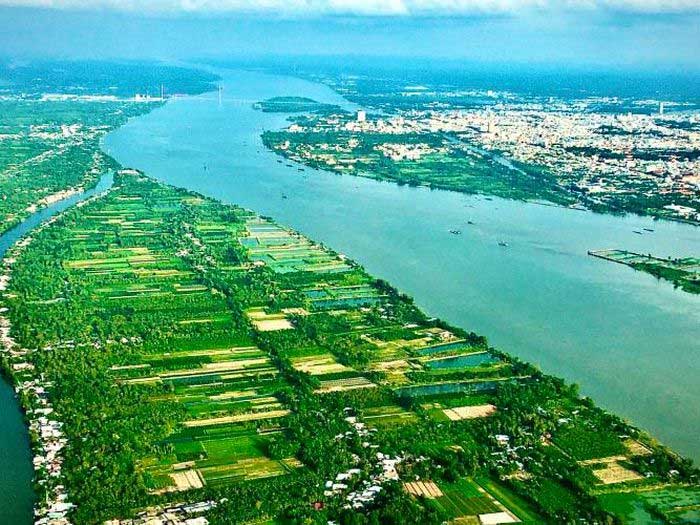Scientists warn that if development continues as it is now, the Mekong Delta could be submerged by up to 90% of its area by 2100.
The Entire Region Below Sea Level
On May 9, the World Wildlife Fund (WWF) released a study by a group of scientists forecasting the future of the Mekong Delta. The research team, led by Professor Matt Kondolf from the University of California, Berkeley (USA), along with Mr. Marc Goichot, Freshwater Program Manager at WWF Asia-Pacific, and Mr. Jeff Opperman, Head of Science Research for the Global Freshwater Program at WWF, provided alarming insights.
The research team concluded that the Mekong Delta in Vietnam could be below sea level by the end of this century if urgent actions are not taken across the river basin. Continuing development in the current manner could lead to 90% of this key agricultural economic region, home to over 17 million people, being submerged, along with significant impacts at both national and global levels.

The Mekong Delta is the agricultural hub of the Mekong River’s lower reaches.
Professor Matt Kondolf noted that most of the Mekong Delta, covering 40,000 km2, is less than 2 meters above sea level. This position makes it highly vulnerable to climate change, particularly the impacts of rising sea levels.
Additionally, activities such as excessive groundwater extraction, unsustainable sand mining for construction and urban expansion across Asia, as well as the rapid development of hydropower plants upstream, threaten the future of this most fertile rice-growing region in Southeast Asia.
“Like other river deltas, the Mekong Delta can only survive if it receives enough sediment from upstream and has sufficient flow to distribute that sediment across the delta’s surface, allowing the topsoil to be replenished at a rate equal to or faster than global sea level rise,” said Professor Matt Kondolf.
“The lack of renewable energy has led countries in the Mekong River basin to develop numerous hydropower dams, where most of the sediment is retained, with little regard for the impacts at the system-wide scale. The meager sediment that reaches downstream is insufficient to meet the demand for sand needed for construction and land reclamation in the booming real estate sector in the region,” summarized Dr. Rafael Schmitt from Stanford University.
Sediment Not Accumulating Will Submerge Rice Fields
According to the research team, in the Mekong Delta, the construction of high dikes to control floods and promote intensification in agriculture has prevented fertile sediment from accumulating on rice fields. There are several actions we can take to ensure that natural ecological processes will help prevent further subsidence and shrinkage of the delta.
Mr. Marc Goichot, WWF Asia-Pacific Freshwater Program Manager and co-author of the study, stated that scientists unanimously agree that the scale and severity of the threats to the Mekong Delta have become evident, but this can be mitigated if we can ensure that sediment remains in the river.
The research team identified six feasible measures that have been implemented worldwide and could significantly extend the delta’s lifespan: Limit the construction of large-impact hydropower dams, replacing them with wind and solar farms where possible. Design or retrofit hydropower dams to facilitate sediment flow.
Gradually reduce and move towards stopping riverbed sand mining and impose strict regulations on all sediment extraction activities. Decrease the demand for sand extracted from the Mekong River by using sustainable building materials and recycled materials.
Reassess the sustainability of intensive agriculture in the Mekong Delta. Maintain connectivity of flood-prone areas in the delta through adjustments to water and irrigation infrastructure. Invest in large-scale “nature-based” solutions to protect coastlines along the delta’s coastal region.
“While the effectiveness of these measures is clear and not highly controversial within the scientific community, especially when implemented in a coordinated manner, their deployment still faces significant barriers,” Dr. Schmitt said.
Some measures may conflict with the interests of certain stakeholders, such as between the sand mining industry and hydropower development. Some measures will require coordination among countries to fully account for system-wide impacts and the benefits of individual actions.
The research team emphasized that implementing these measures requires the involvement of governments and international organizations, particularly from the private sector and civil society. By working together, we can save the Mekong Delta from the risk of being submerged.


















































